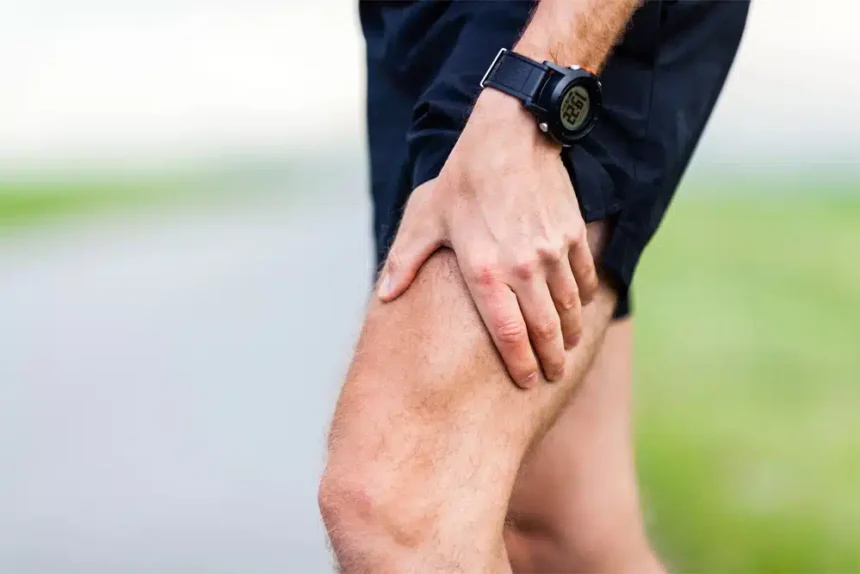Introduction
Arthritis is one of the most common chronic conditions worldwide, affecting millions of people and causing pain, stiffness, and reduced mobility. While there’s no cure, effective pain management strategies can significantly improve quality of life. Managing arthritis pain involves a combination of lifestyle changes, dietary adjustments, exercise, and, when needed, medical treatment.
In this article, we’ll explore practical, evidence-based tips for managing arthritis pain naturally and effectively—helping you move more comfortably and live better every day.
Understanding Arthritis and Its Pain Triggers
Arthritis isn’t a single disease but a term used to describe joint inflammation. The two most common types are osteoarthritis (OA) and rheumatoid arthritis (RA).
- Osteoarthritis: Caused by wear and tear of cartilage, leading to pain and stiffness.
- Rheumatoid Arthritis: An autoimmune disorder where the immune system attacks the joints, causing inflammation and swelling.
Both types involve inflammation that can worsen pain, especially when not managed properly. Identifying and addressing triggers such as poor diet, stress, and inactivity can help reduce discomfort.
1. Maintain a Healthy Weight
Excess weight puts additional stress on your joints, especially the knees, hips, and spine. Losing even a few pounds can significantly reduce pain and improve mobility.
Tips to Maintain Healthy Weight:
- Eat a balanced diet with lean proteins, fruits, vegetables, and whole grains.
- Avoid processed foods and sugary beverages.
- Practice portion control and mindful eating.
2. Stay Active with Gentle Exercise
While it may seem counterintuitive, movement helps reduce arthritis pain. Exercise strengthens muscles, supports joints, and improves flexibility.
Recommended Exercises:
- Low-impact aerobic activities: Walking, swimming, or cycling.
- Stretching and flexibility exercises: Yoga or gentle stretching to maintain range of motion.
- Strength training: Light resistance exercises to support joint stability.
Always consult a healthcare professional before starting a new exercise routine.
3. Focus on an Anti-Inflammatory Diet
Food plays a significant role in arthritis pain management. A diet rich in anti-inflammatory nutrients helps reduce swelling and stiffness.
Best Foods for Arthritis Relief:
- Fatty fish: Salmon, tuna, and mackerel (rich in omega-3 fatty acids).
- Leafy greens: Kale, spinach, and broccoli.
- Fruits: Berries, oranges, and cherries (rich in antioxidants).
- Nuts and seeds: Almonds, chia seeds, and walnuts.
- Healthy oils: Olive oil and avocado oil.
Foods to Avoid:
- Processed snacks and fried foods.
- Red meats and high-fat dairy.
- Sugary drinks and refined carbohydrates.
4. Apply Heat and Cold Therapy
Heat helps relax muscles and improve blood flow, while cold therapy reduces inflammation and numbs painful areas.
How to Use:
- Heat therapy: Use a warm towel, heating pad, or take a warm bath.
- Cold therapy: Apply ice packs for 15–20 minutes to reduce swelling.
Alternate between heat and cold based on what provides better relief.
5. Practice Stress Management
Chronic pain can increase stress levels, which in turn worsens inflammation. Managing stress helps control pain and improve mood.
Effective Stress Management Techniques:
- Meditation and mindfulness exercises.
- Deep breathing and relaxation techniques.
- Gentle yoga or tai chi.
- Spending time in nature or with loved ones.
6. Get Enough Rest and Sleep
Sleep is essential for recovery and pain management. Poor sleep can increase pain sensitivity and reduce energy levels.
Sleep Tips for Arthritis Patients:
- Maintain a regular sleep schedule.
- Create a relaxing bedtime routine.
- Use supportive pillows and mattresses.
- Avoid caffeine and electronics before bed.
7. Try Physical Therapy or Occupational Therapy
Professional therapy can help improve joint function and reduce pain.
Benefits of Physical Therapy:
- Teaches safe movement techniques.
- Improves muscle strength and flexibility.
- Helps prevent joint damage and stiffness.
Occupational Therapy:
- Teaches how to perform daily activities safely.
- Suggests assistive tools like braces or ergonomic supports.
8. Consider Natural Supplements
Certain supplements may support joint health and reduce inflammation. However, always consult your doctor before taking any supplements.
Popular Options Include:
- Glucosamine and Chondroitin: Support cartilage health.
- Turmeric (Curcumin): Natural anti-inflammatory compound.
- Omega-3 Fatty Acids: Reduce inflammation and stiffness.
- Vitamin D: Supports bone and joint health.
9. Stay Hydrated
Water helps keep your joints lubricated and flushes out toxins that can worsen inflammation. Aim for at least 8–10 glasses per day. Dehydration can increase joint stiffness and pain, so make hydration a daily habit.
10. Track Your Pain and Progress
Keeping a pain journal helps identify triggers and patterns. Note your diet, activities, sleep, and stress levels to see what improves or worsens your symptoms.
Conclusion
Managing arthritis pain requires a holistic approach—combining a healthy diet, regular exercise, stress control, and proper rest. By following these everyday tips for arthritis pain management, you can reduce discomfort, improve flexibility, and enjoy a more active lifestyle. Remember, consistency is key, and small daily changes can lead to significant long-term relief.
FAQs
1. What is the best exercise for arthritis pain?
Low-impact exercises like swimming, walking, and yoga are ideal for maintaining mobility without straining the joints.
2. Which foods worsen arthritis symptoms?
Processed foods, sugary snacks, and fried foods can increase inflammation and worsen joint pain.
3. Can weight loss really help with arthritis pain?
Yes. Even modest weight loss reduces pressure on weight-bearing joints, easing pain and improving flexibility.
4. Are supplements effective for arthritis relief?
Supplements like omega-3 fatty acids, turmeric, and glucosamine may help, but consult your doctor before use.
5. How can I manage arthritis pain naturally at home?
You can use a combination of exercise, heat/cold therapy, a healthy diet, and stress-reduction techniques for natural pain relief.





